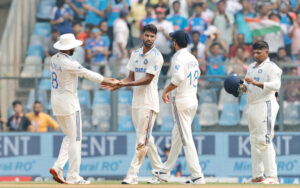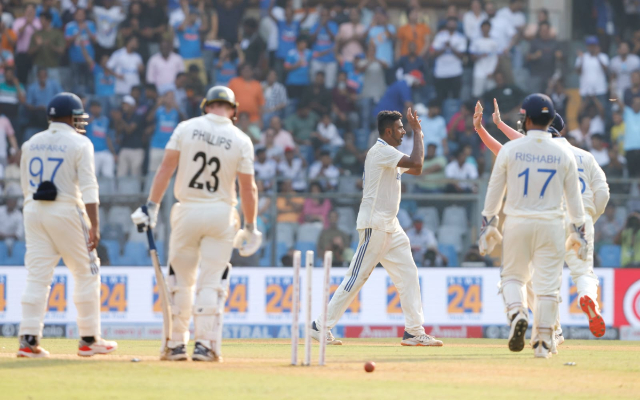
Atreyo Mukhopadhyay in Mumbai
Can they do it? Or will the pressure of chasing a target in the fourth innings on a pitch assisting spinners become too overwhelming? On Sunday at Wankhede Stadium, the Indian team will be put to a test to answer these questions. Most importantly, Day 3 of this final Test against New Zealand will determine if this bunch avoids the ignominy of suffering the first-ever clean sweep, involving three or more Tests, on home soil.
The visitors have pricked Indian pride by winning the first two Tests and the series. In about 90 years of history, India have never lost all matches of a series featuring three or more Tests at home. Looking at how things have panned out this time, such a possibility can’t be ruled out. They have crumbled under pressure and shown glaring signs of vulnerability against spin.
As things stand, the visitors are leading by 143 runs, with one wicket standing. Their No. 10 and 11 are at the crease. By realistic estimates, India will have a target of around 160 to win. On paper, that’s doesn’t appear to be a Herculean task. This very team, in the ongoing series, made 462 and 245 in the second innings. In comparison, the projected target looks gettable.
There is a massive ‘if’ though. This bunch has also shown a tendency to lose wickets in a heap when under pressure and let promising situations slip. It happened in the first innings in Mumbai as well, as India were all out for 263 from 203/5. That’s particularly concerning, because there are nine in this XI with formidable batting records in Test cricket.
For the Latest Sports News: Click Here

In hindsight, having this deep a batting order has also been a problem. Batting slots have got mixed up in this melee of plenty. Washington Sundar came in at No. 9 in the first innings of the second Test and at No. 6 in the second essay, before being pushed back to No. 9 in the first innings of this Test. Despite scoring 150 in the second innings of the first Test, Sarfaraz Khan has played at No. 6, 7 and 8 in the next three outings. This confusion over places has had an effect on performance.
On top of that, there have been inner demons. Lack of runs from Rohit Sharma and Virat Kohli has put the younger batters under additional pressure. On several occasions, the way they got out looked ugly and unbecoming of players of their stature. Although Yashasvi Jaiswal, Shubman Gill, Rishabh Pant, Sarfaraz and even Washington looked good in patches, they have not been consistent. Not in recent memory has the Indian batting unit looked so brittle in home conditions.
Preparing spin-friendly pitches has backfired and Indian batters have appeared more unsure on these surfaces than the visitors. It was evident that there was no conviction in what they were trying. The first two Tests were lost because of the huge gap between the totals the teams put up in the first innings. Only in the third match did the hosts take the lead and that was just of 28 runs. Inability to get more keeps the door ajar and makes this Test 50-50.
This commercial capital of India known as Bombay back then, hosted the first-ever Test India played at home, in 1933. It was played at Bombay Gymkhana. Mumbai, the Wankhede Stadium, was also the venue where India won the 2011 World Cup final. History of a different kind stares India in the eye at the same place. Can they escape the ignominy? A massive Sunday awaits Indian cricket.
Also Read: Shubman Gill makes silent statement by helping India come out of a hole




